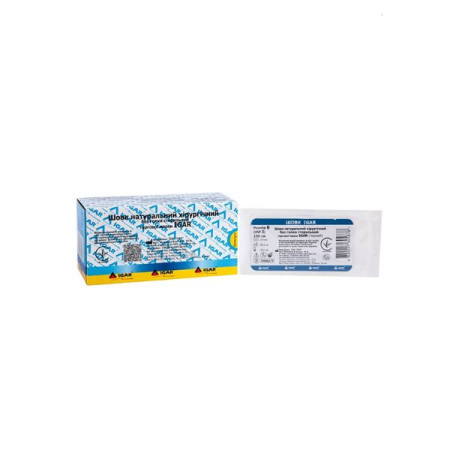Omzol powder for solution for infusion 40 mg bottle No. 10

Powder for infusion solution "Omzol" is used for the following indications:
treatment of duodenal ulcers; prevention of recurrence of duodenal ulcers; treatment of gastric ulcers; prevention of recurrence of gastric ulcers; in combination with appropriate antibiotics, for the eradication of Helicobacter pylori (H. Pylori), which is associated with peptic ulcer disease; treatment of gastric and duodenal ulcers associated with nonsteroidal anti-inflammatory drugs (NSAIDs); prevention of gastric and duodenal ulcers associated with NSAIDs in susceptible patients at risk; treatment of reflux esophagitis; maintenance therapy in patients after treatment of reflux esophagitis; symptomatic treatment of gastroesophageal reflux disease (GERD); treatment of Zollinger-Ellison syndrome.Composition
The active substance is omeprazole (1 bottle contains omeprazole sodium 42.6 mg, equivalent to omeprazole 40 mg).
Excipients: sodium hydroxide, disodium edetate (Trilon B).
Contraindication
Hypersensitivity to omeprazole, to other benzimidazoles or to any of the excipients of the drug.
"Omzol", like other PPIs, should not be used simultaneously with nelfinavir or atazanavir.
Method of application
Dosage
Alternative to oral therapy. For patients for whom the oral form of the drug is unacceptable, it is recommended to use omeprazole 40 mg 1 time per day. For patients with Zollinger-Ellison syndrome, the initial dose of the drug, which is administered intravenously, is 60 mg per day. Higher daily doses may be required, so the dose should be selected individually. If the dose exceeds 60 mg, it should be divided into two equal parts and administered 2 times a day. The drug should be used only intravenously, it cannot be administered by any other route. The solution should be used immediately after preparation, but no later than 3 hours later. The diluted solution of omeprazole should not be stored in the refrigerator. Unused solution should be destroyed.
Instructions for reconstitution of the drug before administration
For intravenous infusions, the contents of each vial of omeprazole, which contains 40 mg of omeprazole, are reconstituted in 10 ml and made up to 100 ml with 0.9% sodium chloride solution or 5% glucose solution. The stability of omeprazole depends on the pH of the infusion solution, so other solvents or their amounts should be used for dilution.
The drug is administered as an infusion over 20-30 minutes.
For intravenous injections, the contents of one vial of omeprazole, which contains 40 mg of omeprazole, are dissolved in 10 ml of water for injection. The product in the form of an intravenous injection should be administered slowly (over 5 minutes).
The solution should be used immediately after preparation, but no later than 3 hours. The diluted omeprazole solution should not be stored in the refrigerator.
Any unused product or waste material should be disposed of in accordance with local requirements.
Special categories of patients
Dose adjustment is not required in patients with renal impairment.
A daily dose of 10-20 mg may be sufficient for patients with impaired liver function.
No dose adjustment is required for elderly patients (> 65 years).
Application features
Pregnant women
The results of the studies indicate that there is no undesirable effect of omeprazole on pregnancy or the health of the fetus/newborn. Omeprazole can be used during pregnancy.
Omeprazole is excreted in breast milk, but is unlikely to affect the child if used in therapeutic doses.
Children
Experience with the use of the drug for intravenous administration in pediatric practice is limited, therefore it should not be prescribed to this category of patients.
Drivers
It is unlikely that the drug affects the ability to drive a car or work with other mechanisms. Given that sensitive patients may experience adverse reactions (dizziness, drowsiness, hallucinations, reversible confusion) when using the drug, such patients should refrain from driving vehicles and working with complex mechanisms that require concentration of attention while taking the drug.
Overdose
There is limited information on the effects of omeprazole overdose in humans. Cases of use of the drug in a dose of up to 560 mg have been described; there have also been isolated reports of single oral doses of omeprazole that reached 2400 mg (120 times the usual recommended clinical dose). Nausea, vomiting, dizziness, abdominal pain, diarrhea and headache have been reported. Apathy, depression and confusion have also been reported in isolated cases. The symptoms described were transient, and no serious consequences have been reported. The rate of drug elimination did not change (first-order kinetics) with increasing doses of the drug.
If necessary, symptomatic treatment should be carried out. In clinical studies, intravenous administration of the drug was used in doses of up to 270 mg for one day and up to 650 mg for three days, which did not lead to the appearance of any dose-dependent adverse reactions.
Side effects
The most common side effects are headache, abdominal pain, constipation, diarrhea, flatulence, nausea/vomiting.
Storage conditions
Shelf life - 2 years.
Shelf life after reconstitution: Chemical and physical in-use stability of the reconstituted solution has been demonstrated for 12 hours at 25°C after reconstitution with 0.9% sodium chloride solution and for 6 hours after reconstitution with 5% glucose solution. From a microbiological point of view, the reconstituted solution should be used immediately, unless reconstitution has taken place in controlled and validated aseptic conditions.
There are no reviews for this product.
There are no reviews for this product, be the first to leave your review.
No questions about this product, be the first and ask your question.









